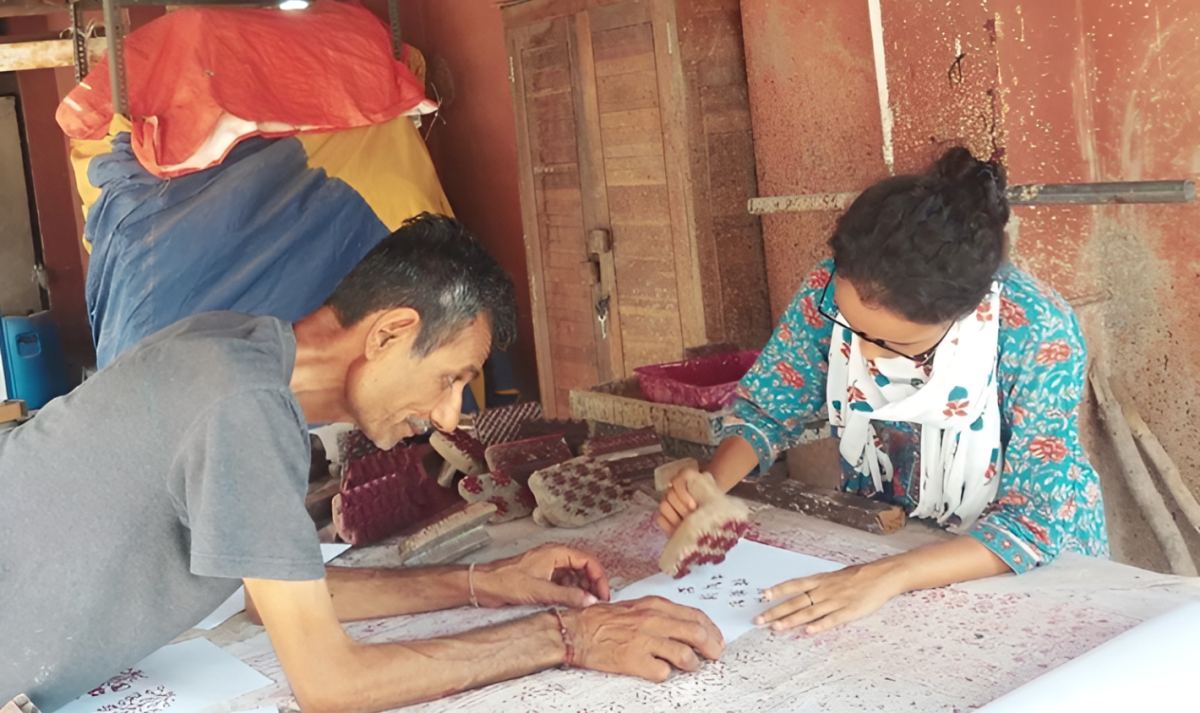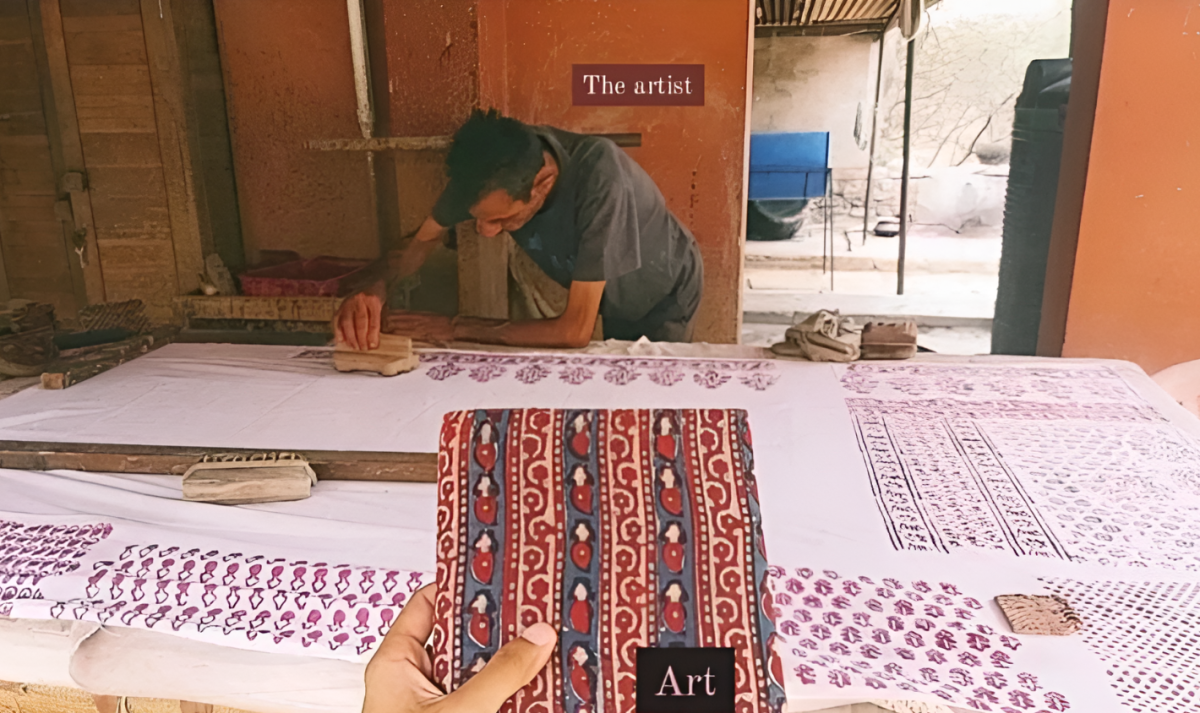News
Bela Block Printing, Kachchh: Down to the Last Artisan
- NameRutuja Nilesh Sahasrabudhe
- Date01 Apr 2024
- CategoryICH News

Once home to a flourishing block printing trade between Kachchh and the nearby villages of Sindh in Pakistan (then part of undivided India), lies Bela village1. Bela Block Printing, a unique style that takes its name from the quaint town of Bela, is known for its versatility and efficiency. It is one of the earliest and slowest forms of textile printing. Bela block-printing can be easily recognized by its bold and precise patterns created by alternately washing and dyeing with alum and mud-resisting application on rustic fabrics.
For the people of Bela, practicing this craft was more than just an item of utility; they practiced this art to embody memories, mark essential landmarks of their lives, and show who they were. The Hindu-Khatri community of Bela is the one that used to practice this craft form for Kanbi Patel (farmers), Jains, Lohana, Prajapati, Rajput, and Rabari communities. They were making chaniya (skirt) and odhani (veil) worn by women. The designs for these were fixed, and the motifs evolved according to the age of the women wearing the skirt. Initially, there were at least 50-60 Hindu Khatri families. They collected Indigo, ghee, and red rice (Sindhi rice) from Sindh.
However, in due course, the town started facing a fall in demand for artisanal products among its local communities, who gravitated towards buying cheaper, machine-made goods2. A labour and time-intensive craft like Bela printing hardly stood a chance. At present, craft form is in danger of dying out with no young takers for it. Most of the younger generation finds it difficult to see traditional occupations as unviable and financially lucrative paths. Manuskh Pitambar Khatri is the only last artisan in his community who continues to practice the craft of Bela in Kachchh. Khamir, an NGO based in Kachchh, took the initiative to reinvigorate this traditional craft form and offered work to Manuskh Bhai (as he is affectionately known). I got an opportunity to work with Khamir in 2022 under the guidance of Ghatit Sir and Dipesh Sir on another craftform, but I took my time to interact and learn the history of this craft from none other than Mansukh Bhai himself. I remember our conversation during one of our chai (tea) breaks when Manuskh Bhai said, “It is disheartening to realize that successive generations of young individuals, whose ancestors hailed from Bela, are maturing without an appreciation for the extensive history and techniques of the craft. The sustaining of these skills relies on their continuity through each new generation. These abilities connect to our origins and constitute an integral aspect of our collective heritage. Initially, there was a lot of business. However, after the India-Pakistan border conflicts increased, the trade routes dried up, and artisans were forced to abandon their craft. Now special permission is required even to approach the border”. His journey began at age 11, learning the basics of dyeing, washing, and printing. His father passed away when he was pretty young. He said, “So, most of my time was spent with my elder brother by quietly sitting beside him, watching him carefully convert an ordinary piece of fabric into a piece of art.” Today, Mansukh Bhai, in almost his 60s, washes, prints, and dyes all by himself. As he continues his solitary pursuit of preserving Bela block printing, he is acutely aware that he will leave behind a legacy.
The wooden blocks, once the center of family life in Bela, will serve as tangible threads connecting future generations to the rich history of Bela`s block printing. Despite the challenges, Manuskh Bhai`s dedication ensures that this cultural heritage endures, awaiting a revival in appreciation and recognition.
QUICK MENU 원하시는 서비스를 클릭하세요!
There is no registered quick menu.





